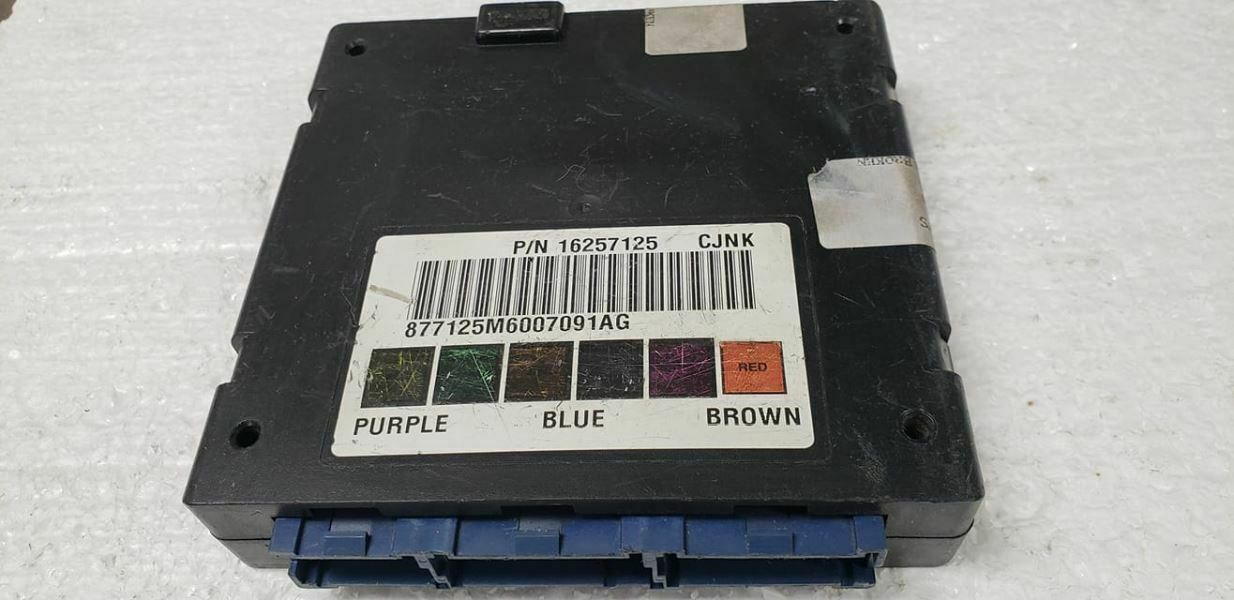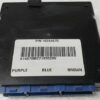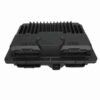Restore Your Vehicle’s Electrical System
Are you battling bizarre and frustrating electrical issues in your Oldsmobile Bravada, Chevy S10, GMC Sierra, or another compatible GM vehicle? Flickering dash lights, power windows with a mind of their own, a security system that randomly prevents your truck from starting, or a dome light that never turns off are all classic symptoms of a failing Body Control Module (BCM). This module is the central nervous system for your vehicle’s body electronics, and when it fails, it can create a cascade of confusing problems. Don’t replace random parts hoping for a fix. This VIN-programmed BCM is the direct, reliable solution to restore your vehicle’s functionality and your peace of mind.
This isn’t just a replacement part; it’s a complete solution. The key to a successful BCM replacement is proper programming. An unprogrammed module from a salvage yard or another vehicle simply will not work. It must be coded with your vehicle’s specific Vehicle Identification Number (VIN) and factory options. We handle this critical step for you. Simply provide us with your VIN after purchase, and our technicians will flash the module with the latest GM software and your vehicle’s unique configuration. It will arrive at your door ready for installation, saving you the time, cost, and hassle of a dealership visit.
From the Diagnostic Bay
We had a ’99 GMC Jimmy come into the shop with a list of electrical gremlins that seemed unrelated. The customer complained that the radio would lose its presets, the power door locks worked intermittently, and the horn would sometimes honk when using the turn signal. He’d already replaced the battery and checked every fuse. After connecting our diagnostic scanner, we saw multiple communication error codes pointing toward the BCM. Instead of hours of complex wiring diagnostics, we started with the most likely culprit. After installing a pre-programmed BCM, every single one of the strange issues was resolved instantly. It’s a perfect example of how this single component is the root of so many creature-comfort functions in these vehicles.
Is Your Body Control Module Failing?
A faulty BCM can manifest in numerous ways. If you’re experiencing any of the following, a failing BCM is the likely cause:
- ✔ Erratic or non-functional power windows, door locks, or mirrors.
- ✔ Interior lights (dome, dash) staying on or not working at all.
- ✔ The security or anti-theft system (Passlock/VATS) activating and causing a no-start condition.
- ✔ Inconsistent operation of windshield wipers or washers.
- ✔ Radio, climate controls, or other interior electronics behaving unpredictably.
- ✔ False warning lights appearing on the instrument cluster (e.g., airbag, brake).
- ✔ Communication error codes when scanned with a diagnostic tool.
The Importance of a Programmed 1998 Bravada Body Control Module
The BCM in your GM vehicle is more than just a simple circuit. It’s a computer that is specifically configured at the factory for your vehicle’s exact build sheet—including features like keyless entry, power seats, and the specific type of security system. Using a generic or non-programmed module will result in system conflicts, non-functional features, and will almost certainly prevent the engine from starting due to security mismatches. Our VIN programming service ensures that the replacement module is a perfect digital clone of your original, guaranteeing seamless integration and correct operation of all body-related functions.
Installation and Post-Install Procedures
Installation is straightforward for those with mechanical experience. The BCM is typically located under the dash, either in the center (Bravada, S10, Blazer) or on the driver’s side (Silverado, Sierra, Astro). It involves disconnecting the battery, removing trim panels for access, and swapping the electrical connectors. While the module is plug-and-play thanks to our pre-programming, some vehicles may require one or two final sync procedures:
- Airbag System Sync: If the airbag warning light is illuminated after installation, a professional scan tool must be used to perform the ‘Setup SDM Primary Key in BCM’ procedure. This syncs the new BCM with the airbag system’s Sensing and Diagnostic Module (SDM).
- Brake Pedal Position Relearn: On some models, a brake pedal position sensor recalibration might be necessary to ensure correct brake light operation and to satisfy the traction control system.
Always consult a factory service manual or a qualified technician for guidance specific to your vehicle.
Guaranteed Compatibility
This module is a direct replacement for a wide range of GM trucks and SUVs. It is compatible with the following part numbers: 19153625, 8191536250, 16257125, 191583625, 8093668010, 8162571250, 8191536250, and 09366801. Please verify your part number and check the fitment list below to ensure this is the correct part for your vehicle.
Frequently Asked Questions
Do I need to send my old BCM back?
No, there is no core charge for this part. You can keep your original module.
How do I provide my vehicle’s VIN?
You can add your VIN to the notes section during checkout. If you forget, we will contact you via email after your purchase to request it before we program and ship the module.
Is this a difficult part to install myself?
For someone with moderate DIY skills, the physical installation is manageable. The main challenge is often accessing the module’s location under the dashboard. The part itself is plug-and-play, but be aware that post-installation procedures like an airbag sync may require a professional-grade scan tool.
What happens if I install a BCM that isn’t programmed?
An unprogrammed BCM will not work correctly. The vehicle’s security system will likely prevent the engine from starting, and many electronic features like power windows, locks, and lights will either not work or behave erratically. VIN programming is essential.
Will this fix my no-start problem?
If your no-start issue is caused by the security system (e.g., a flashing security light), then a properly programmed BCM is very likely the solution. However, a no-start can have many causes, so proper diagnosis is always recommended.


